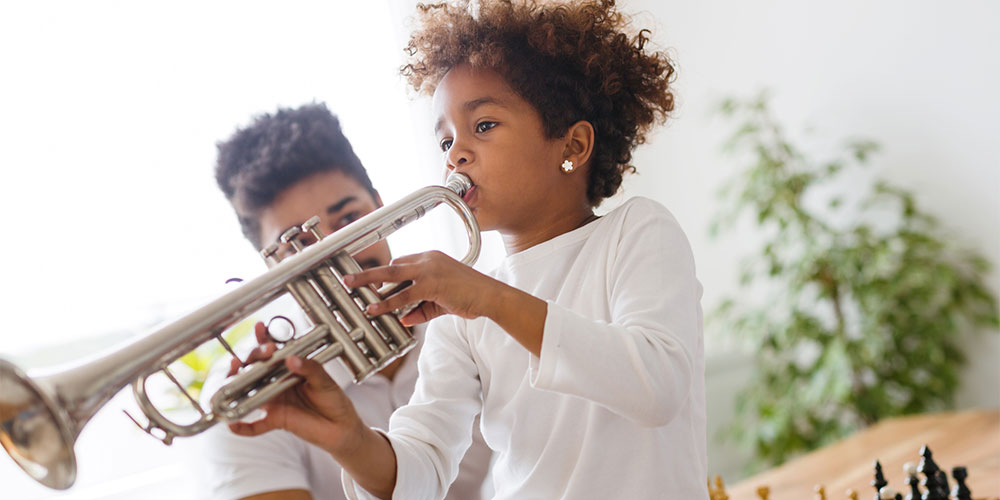The music and culture of jazz has deep roots in history, math, and social learning. That means educators who teach about this type of music have the opportunity to fulfill more than one curriculum objective.
While jazz has gained worldwide appeal, the genre came to life right here in the United States. Given our country’s relative youth, that’s a nice bragging point. But its status as an indigenous artform provides only a fraction of the academic benefits your students stand to gain from learning about the rich history and unique trademarks of these compositions.
Let’s take a gander at how you can use jazz music as a vehicle to teach American history, explain mathematical concepts, and enhance your students’ social–emotional intelligence. Oh, and we’ll throw in a few classroom activities to make your teaching life a little easier.
Defining the Jazz Genre
As the Herbie Hancock Institute of Jazz has outlined, defining this lush music means understanding eight distinct and vital characteristics:
- Jazz creates a musical conversation. Musicians plan some moments; others they improvise. Either way, the genre involves musicians and instruments talking with each other and responding to the energy each player creates.
- Jazz reflects the reality of here and now. When playing, the band will draw upon the energy of the moment. While this music certainly draws from various social and artistic influences of the past, players find inspiration in what’s happening in real time.
- Jazz is young compared to other genres. The first jazz recording came to the presses in 1917. Classical music, on the other hand, goes back centuries.
- Jazz originated from the experience of the Black community. The music first appeared in New Orleans, a diverse city, in the early 20th century. It drew upon slave work songs, spirituals, blues, and other musical forms inextricably linked with the experience of being Black in America.
- Jazz enjoys universal appeal. The genre stretches beyond a niche market. People from all religions, cultures, countries, and socioeconomic backgrounds enjoy this music.
- Jazz stands as a unique art form. While it draws upon influences, as all art does, jazz music hinges on how it is played rather than what is played.
- Jazz exudes complexity. People have conversations. Said people are complicated, each of us dealing with a unique situation in any given moment. Since jazz hinges on humans speaking to one another through an instrument, those chats come with a whole lot of nuance.
- Jazz focuses on human emotion. We can talk about intellectual rigmarole all day long, but at the end of the day, this music is about human feeling. That is, exploring, understanding, and creating emotion.
Jazz and American History
The French gave us cinema. In what is now modern-day Iraq, the Sumerian civilization etched out the first readable language. Cave wall paintings in Spain date back some 45,000 years. These are unquestionably valuable artistic contributions that have enhanced just about everyone’s life in some form or fashion.
So what about jazz?
It’s uniquely American. It’s not exactly heresy to proclaim that this music might be America’s most notable contribution to the arts and humanities. But its rich history goes beyond its birth location. In fact, this music came from the histories and experiences belonging to people of color.
In a nutshell, jazz sprang out of the sad reality that slaveowners forbade native musical traditions once cherished by the human beings they owned and exploited. It was in that absence that the Black community developed their own form of musical expression.
Though every person, regardless of race or class status, can enjoy the genre, we’d be remiss to overlook the community who offered such a gift to the world. From that pain came new beauty, and while the historical origin can never erase human suffering, the music allows for celebration of how far we’ve journeyed.
The Social Learning of Jazz Music
The successful teaching of history goes beyond the memorization of dates and battle outcomes. Understanding the events of yesterday means knowing the hardships and ingenuity of groups who may have experienced more intense struggles than their descendants. Which is a key ingredient to enhancing social learning.
American history is rife with bloodshed, injustice, and human strife. Though jazz aims to celebrate as well as lament, it’s imperative that our students understand that a lot of the art we enjoy comes from a place of deep pain.
In the mid-1960s, Dr. Martin Luther King opened the Berlin Jazz Festival with a speech that explained how the genre was a call for social change. The video below showcases a multi-person reading of this short but no less impactful speech.
Connecting Jazz and Math
Every scientific study on the matter points to a similar conclusion: Music enhances thinking, decision-making, and planning. Are there more perfect elements to describe the qualities it takes to solve math problems?
When it comes to the connection between music and math, there are so many overlapping elements. From rhythm to syncopation, the notes musicians release are a matter of understanding fractions and formulas.
In terms of the relationship between math and jazz music, it’s worth noting that John Coltrane considered Albert Einstein an influence in his composing. So how does the world’s most famous theoretical physicist and a saxophone virtuoso form such a partnership?
While it’s well known that music itself enhances all the brain’s critical thinking and problem-solving functions, there’s one missing puzzle piece. And that element is imagination, a trait that both Einstein and Coltrane share despite their being experts in different disciplines.
Without the ability to visualize and see all possible outcomes, you’ll conjure a half-baked idea. And that’s true for both math and jazz.
Classroom Activities for Teaching Jazz
What Ties Us Together
This craft-based ELA activity for teaching jazz allows students to create art that responds to jazz music. Since the genre is about opening a dialogue between creators, this is an ideal lesson plan to explain how to respond to and build on the feeling the music creates. The final product can be a poem, self-portrait, or depiction of the musicians playing the songs.
Access “What Ties Us Together” classroom activity.
“Watermelon Man” Scratch Puzzle
This is a math and science classroom activity based on the classic song “Watermelon Man” by Herbie Hancock. As outlined in the learning objective, “students practice finding patterns in music and proportional relationships in rhythm, reinforcing aspects of computational thinking relating to both music and coding.” Note that this lesson requires computer workstations, so you may need to relocate to a special area classroom.
Access “‘Watermelon Man’ Scratch Puzzle” activity.
“Early Jazz”
This history lesson plan introduces students to the music of 1920s America. The lessons promote an understanding of the historical significance and cultural implications of the genre.






